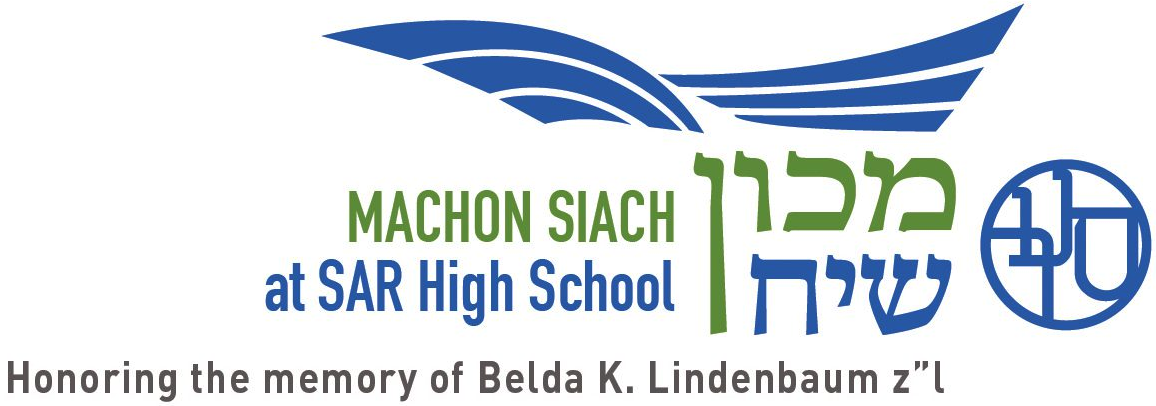
Vigilante Justice and the Rule of Law: An Introduction to Avid Inish Dina Lenafshei
Two features of Gemara study that often frustrate high school students and are often found together are the long, drawn out sugyot with multiple proofs and disproofs and the sugyot that result in no conclusion. Why in the first place, the question goes, can we not just study the Gemara’s conclusions, and why, especially in some of these longer sugyot, are there no conclusions at all? How are we to relate to a sugya that is so unrelatable, not only in content, but in form? It appears as though we aren’t being told to actually do anything. How do we make a practically irrelevant sugya more relevant?
As part of SAR’s 9th grade Bava Kama curriculum, we study the sugya of Avid Inish Dina Lenafshei, taking justice into your own hands. The sugya centers around the question of whether a person must always use conventional legal channels to redress wrongdoing perpetrated against them. Put differently, must they go to court, or may they take matters into their own hands, even using physical force if necessary? Does the damage I inflict in using such force, whether to another person’s body or their property, constitute damages for which I am liable? In the sugya in Bava Kama, this fundamental question is presented as an amoraic dispute, with multiple attempted proofs in both directions.
The sugya is lengthy, spanning almost an entire daf, and in the process other important practical questions emerge: what kind of grievance may one potentially seek to redress on their own? Is it only a financial loss like theft or damages? Is it even one that results in mere inconvenience, like being forced to walk around the block to avoid a public thoroughfare that has been blocked by someone else’s property? What about wrongdoing that is not interpersonal in nature: may I potentially also use physical coercion to enforce precepts of the Torah like Shabbat observance or preventing illicit sexual relations? What if resorting to legal channels will result in irreparable loss? Might that be an exception where everyone agrees the victim may take matters into their own hands?
While these and other questions are all raised explicitly in the Gemara, they are left mostly unanswered. For while Avid Inish is a relatively well organized sugya – it entails eight proofs, four in favor of vigilante justice, followed by four against – it provides no definitive conclusions. Students will often wonder, when the dust settles, how are we to behave? What are we supposed to think? May we practice vigilante justice? Are we even encouraged to, where possible? What emerges in this instance is a familiar challenge to meaningful Gemara learning we raised above: sugyot often tend to be long, drawn out and ultimately inconclusive. Why does the Gemara go to the trouble of so much back and forth only to leave issues unresolved?
One effective approach to making meaning of a sugya that seems entirely academic, inconclusive, and even at times futile is to treat it as not just a normative sugya which attempts to prescribe behavior and establish law, but as also, maybe even primarily, a values-based sugya that endeavors to teach us something about the world and help us refine our character. In this instance, we encounter a tension between allegiance to communal institutions of authority (the courts) and a person’s individual, passionate pursuit of justice. In teaching Gemara to a room full of high school students, I try to remind myself that adolescents are often fiercely independent and suspicious of authority. The curricular choices I make in class are often made with this tension in mind: How are we to balance our personal sense of justice with our fealty to communal institutions?
Towards this end, I will focus here on one particular aspect of the sugya: its introduction. The Gemara (Bava Kama 27b) introduces the sugya of Avid Inish with a story, a long distance conversation between Rav Nachman and Rav Chisda:
שלח ליה רב חסדא לר”נ הרי אמרו לרכובה שלש ולבעיטה חמש ולסנוקרת שלש עשרה – לפנדא דמרא ולקופינא דמרא מאי? שלח ליה חסדא חסדא קנסא קא מגבית בבבל?! אימא לי גופא דעובדא היכי הוה. שלח ליה ״דההוא גרגותא דבי תרי דכל יומא הוה דלי חד מנייהו. אתא חד קא דלי ביומא דלא דיליה. א”ל ״יומא דידי הוא!״ לא אשגח ביה. שקל פנדא דמרא מחייה. א”ל ״מאה פנדי בפנדא למחייה! אפילו למ”ד לא עביד איניש דינא לנפשיה במקום פסידא עביד איניש דינא לנפשיה! דאתמר…״
Rav Chisda sent the following question to Rav Nachman: We know that when one person knees another, the damager must pay a sum of three sela for embarrassment; for kicking another, five; and for punching him, thirteen. How much must the damager pay for hitting another with the handle of a hoe and for hitting him with the head of a hoe? Rav Nachman sent him the following response: Chisda, Chisda, are you collecting fines in Babylonia? Tell me how the incident itself transpired? Rav Chisda sent him in response: There is a certain cistern belonging to two people whose arrangement was to alternate its use, so that every day one of them would draw from it. One day, it happened that one of them came and was drawing water on a day that was not his. His co-owner said to him: “This is my day to draw!”. His colleague did not pay attention to him. The person whose day it was therefore took the handle of a hoe and struck the person who was stealing his water (who then sued for damages).
In response to Rav Nachman’s request for the case in question, Rav Chisda presents a scenario of vigilantism. Two partners own a water hole, switching off days for its use, but one partner took water on a day that was not his. After being asked to stop and refusing to do so, the rightful user hit him over the head with a shovel.
Rav Nachman responds to this query by saying the rightful user owes the wrongful user nothing. In fact, Rav Nachman claims, “He would be allowed to hit him even 100 times! … For everyone agrees that in a situation of financial loss, a person may take justice into their own hands.” At this point, the sugya commences, spending the better part of a daf deliberating on the question of avid inish dina l’nafshei – may someone engage in vigilante justice?
Returning to the introductory passage, however, before the substance of the issue is discussed, Rav Nachman, the third generation amora and the chief judge of the rabbinic court, is asked a question from Rav Chisda: how much is due to one who has been struck by the head or the handle of a hoe? Instead of answering the question, Rav Nachman responds with incredulity: the question itself is an invalid one, for kenas, fines, may not be collected in Bavel. That is, courts in Bavel have jurisdiction only over principal payments owed, such as repayment of theft and damages, but fines levied against a defendant as a form of punishment are the jurisdiction only of the courts in Israel. Here in our sugya, Rav Nachman challenges Rav Chisda over the very assumption of the question: “Why are you asking me this? Are you collecting kenas in Bavel?”
Students often note at this point that, on its face, Rav Nachman’s incredulity is puzzling. While students will often phrase the question by wondering why Rav Chisda couldn’t just be wondering the answer to an academic question – after all, students assert, “the Gemara asks theoretical questions all the time!” – there are also many plausible practical reasons for asking such a question beyond Rav Nachman’s presumptive understanding that Rav Chisda was adjudicating just such a case in court and wondering how he should rule. The Rashba raises three possibilities in his comments on the sugya:
Maybe the injured party has seized property from the offender in the amount of the proposed fine. In such a case even in Bavel we do not repossess it from him since strictly speaking he is entitled to that payment and the party from whom he seized it cannot claim that he does not owe that amount (“תפס לא מפקינן מיניה”). Do we not then need to know the appropriate sum for the payment?
Perhaps the defendant has received a summons to appear in a court in Israel and is now faced with a choice: should he travel back and forth to Israel for his defense, or should he avoid the hassle of travel and simply pay the injured party the sum now?
In the event he chooses not to go to Israel for his court date, he is placed in cherem until he pays the sum of the fine being claimed from him. Would we not need to know how much he should pay for the cherem to be lifted?
For these reasons and others, one can envision a scenario where Rav Chisda may be moved to ask regarding the amount of embarrassment payment to collect, without contravening the rule about adjudicating fines in Bavel.
The Rashba raises all these possible motivations for Rav Chisda’s question and suggests that it is for this very reason that Rav Nachman follows it up with, “tell me what transpired.” As if to say, “I know this question indeed has practical implications, so tell me the facts of the case.”
The Rashba’s suggestion is creative and perhaps compelling, but it is a difficult read of the sugya. After all, were this Rav Nachman’s intent in inquiring as to the facts of the case, the Gemara should have at the very least included a final reply from Rav Nachman delineating the amount one should collect for damage inflicted with a head or handle of a hoe. But the Gemara never returns to answer this practical question, indicating that Rav Nachman’s response had other motivations. The simpler read of the text of the Gemara, then, seems as though Rav Nachman is summarily dismissing Rav Chisda’s question from all practical application. He is saying the offense Rav Chisda reports is not actionable, for the courts in Bavel have no jurisdiction over levying fines. He asks for the facts of the case having already determined the legal questions here are entirely in the realm of the theoretical.
This introductory exchange, then, is perhaps meant to frame the entire sugya as one less about applied law and more about theory and values.
After we’re knee-deep and a few proofs into the sugya of Avid Inish, I’ll often ask my students to recall how this sugya was introduced. In articulating Rav Chisda’s query to Rav Nachman and wondering how we got here, we realize that the initial dilemma Rav Chisda raised is of absolutely no consequence to the matter at hand. In addition to answering any specific questions about when one may or may not take matters into their own hands, by setting the entire sugya in Bavel and centering it around an initial question removed from practical application, the Gemara seeks to address the larger tension between a passionate, personal pursuit of justice on the one hand and going through proper legal channels on the other. With this literary and halakhic sleight of hand, the sugya is thus transformed from a question of, “are you obligated to pay for damages?” into one of, “is what you are doing a good idea?”
Psak Halakha
After beginning the sugya by noting this introductory framing and going on to read the Gemara’s eight proofs, I conclude our learning by citing the dispute among the Rishonim concerning how we rule. The Rif comments here:
והלכה כרב נחמן דקי”ל הלכה כרב נחמן בדיני.
The halakhic ruling is like Rav Nachman, for we have established that the law always accords with Rav Nachman in civil/monetary matters.
Rabbeinu Ephraim (s.v. d’kayma lan) argues that this is not a monetary matter. The question to ask in this sugya is not whether or not he must pay but whether the vigilante has done something permitted or not! It is primarily a moral, societal question, not a civil, monetary one.
Making sense of this sugya’s introduction and showing its importance in framing the sugya as a values-based discussion helps students relate to the sugya more meaningfully. In times of increasing social unrest, when segments of society feel betrayed by and distrustful of communal institutions like the courts, using this sugya to reflect upon the leeway Chazal provide in exacting justice extralegally becomes timely and pertinent.
Ultimately, as a Gemara teacher, my most rewarding moments in the classroom are when I am successful in addressing a pressing question about Gemara or an obstacle my students may have in finding it relatable and relevant to their everyday lives. In the case of a longer, multi-stage sugya that is ultimately inconclusive, its relevance often lies in our willingness to appreciate the sugya’s framing, structure and development and then to excavate the values of the sugya that are just below the surface.



